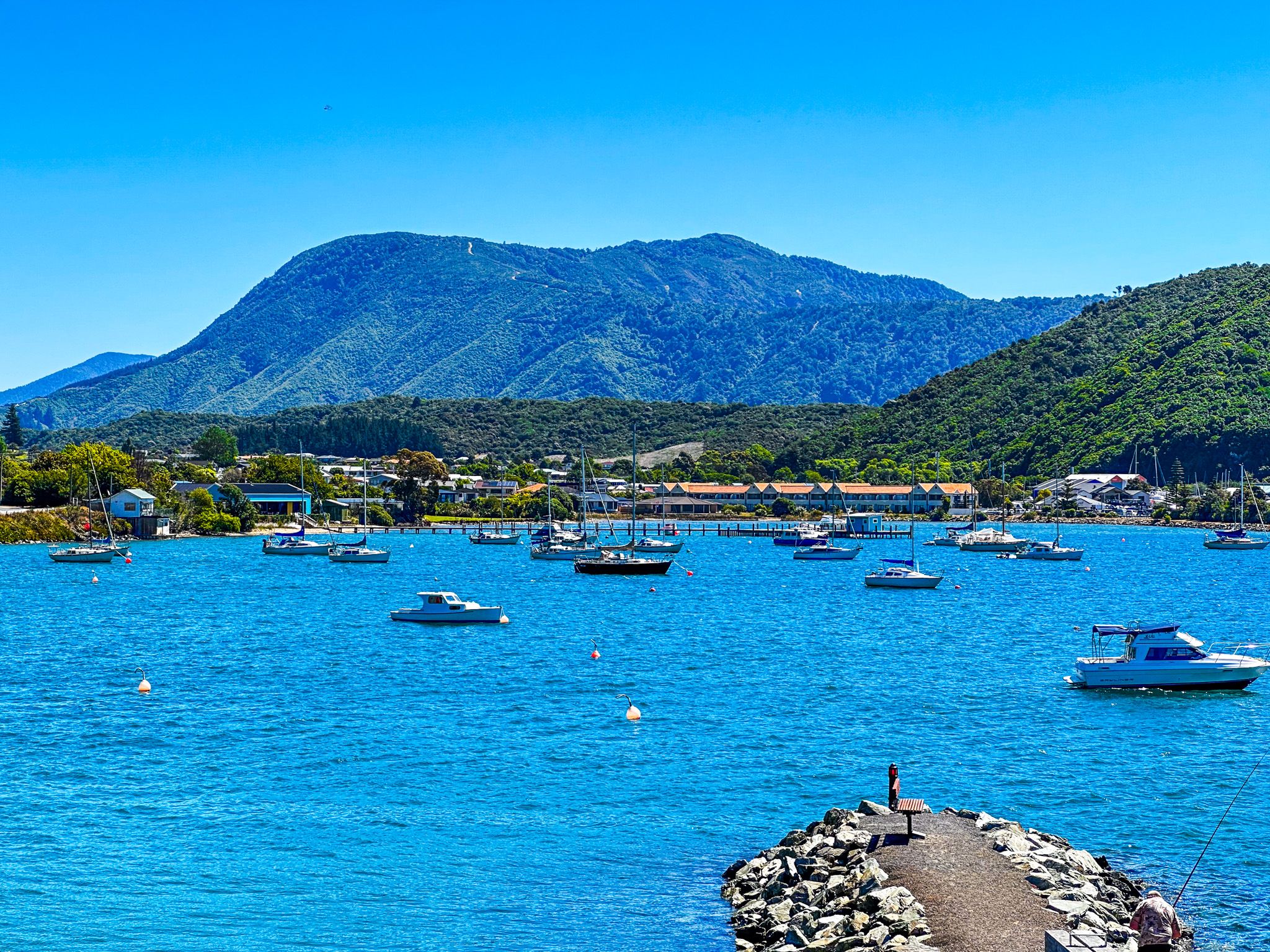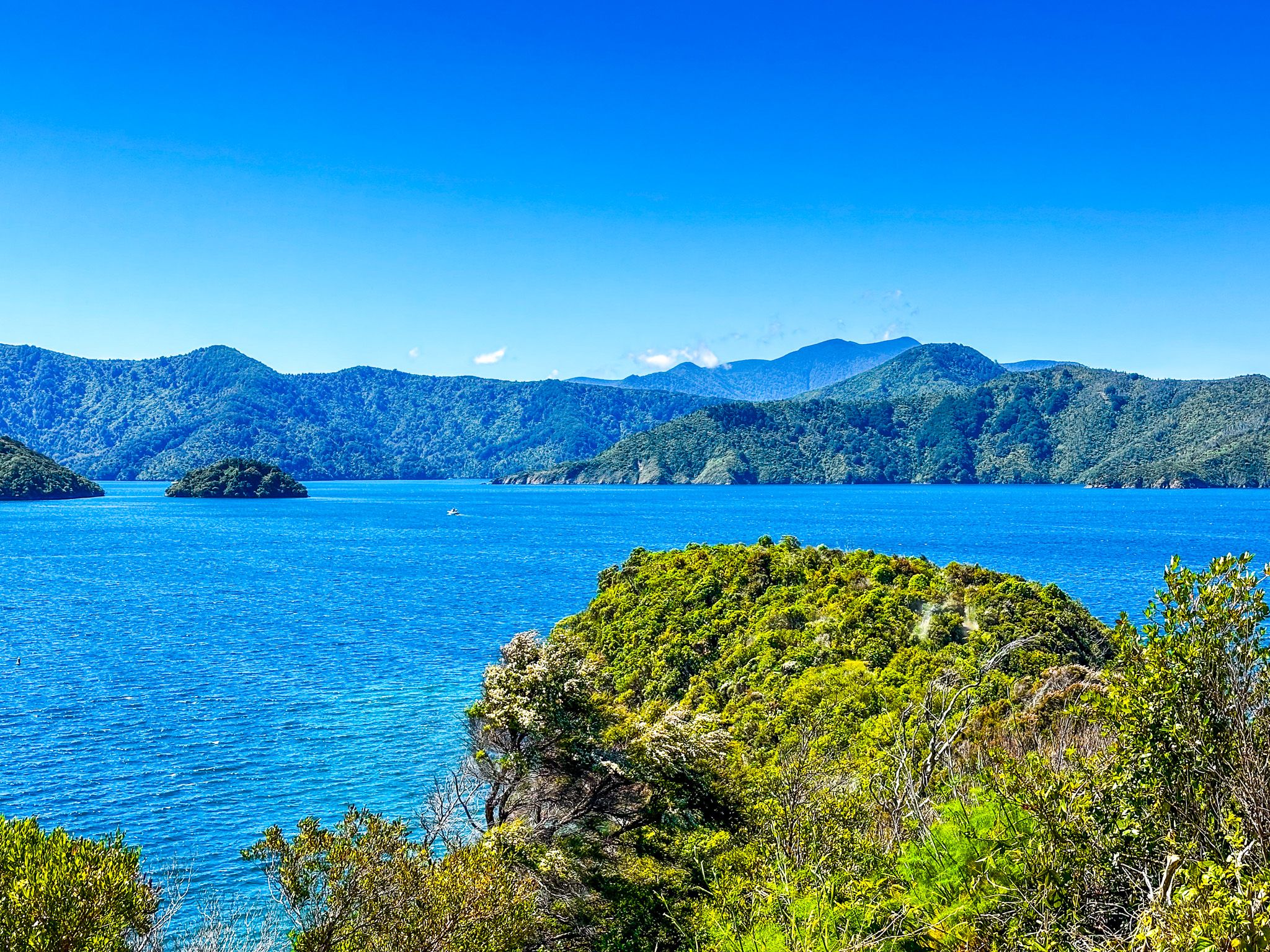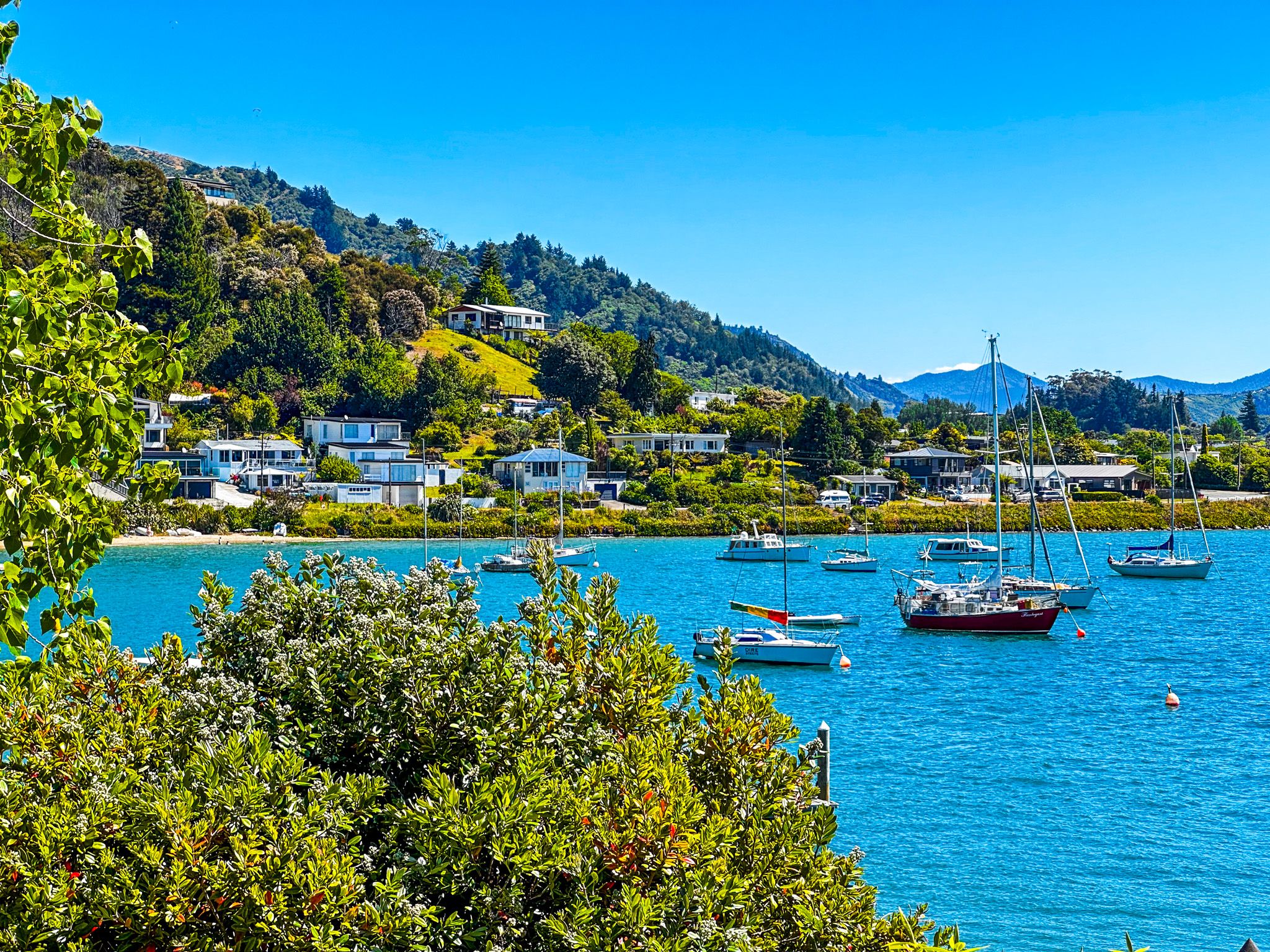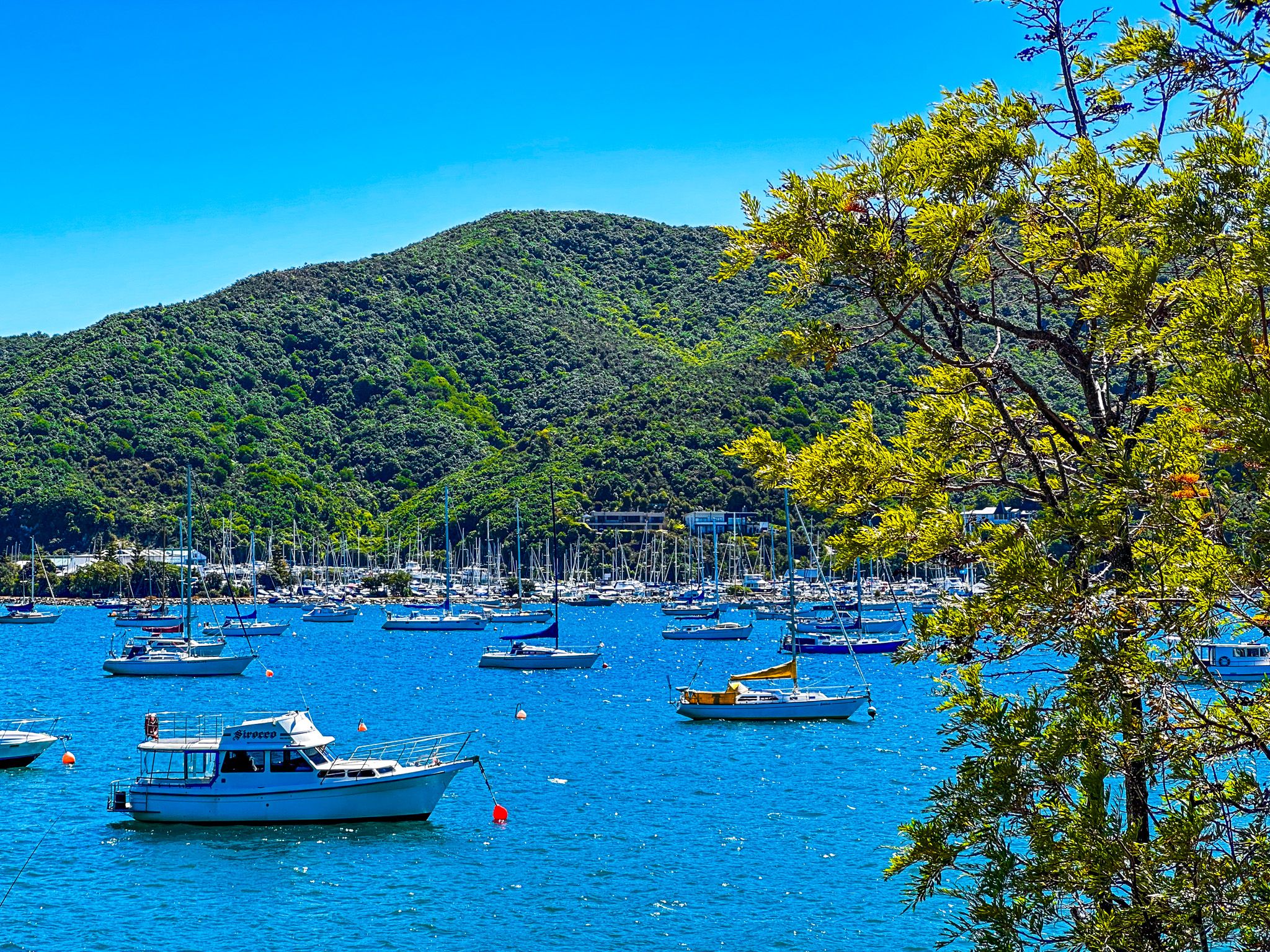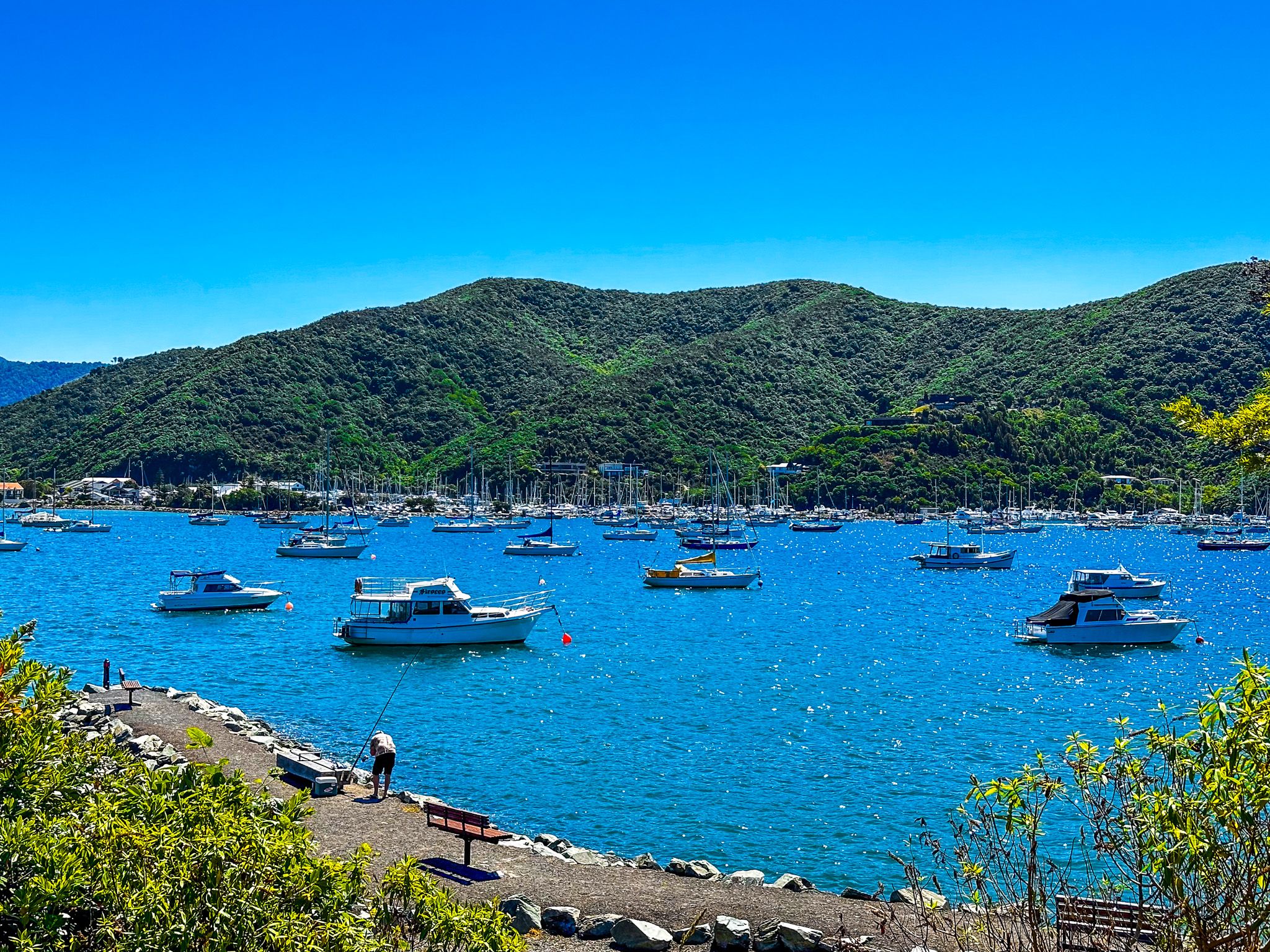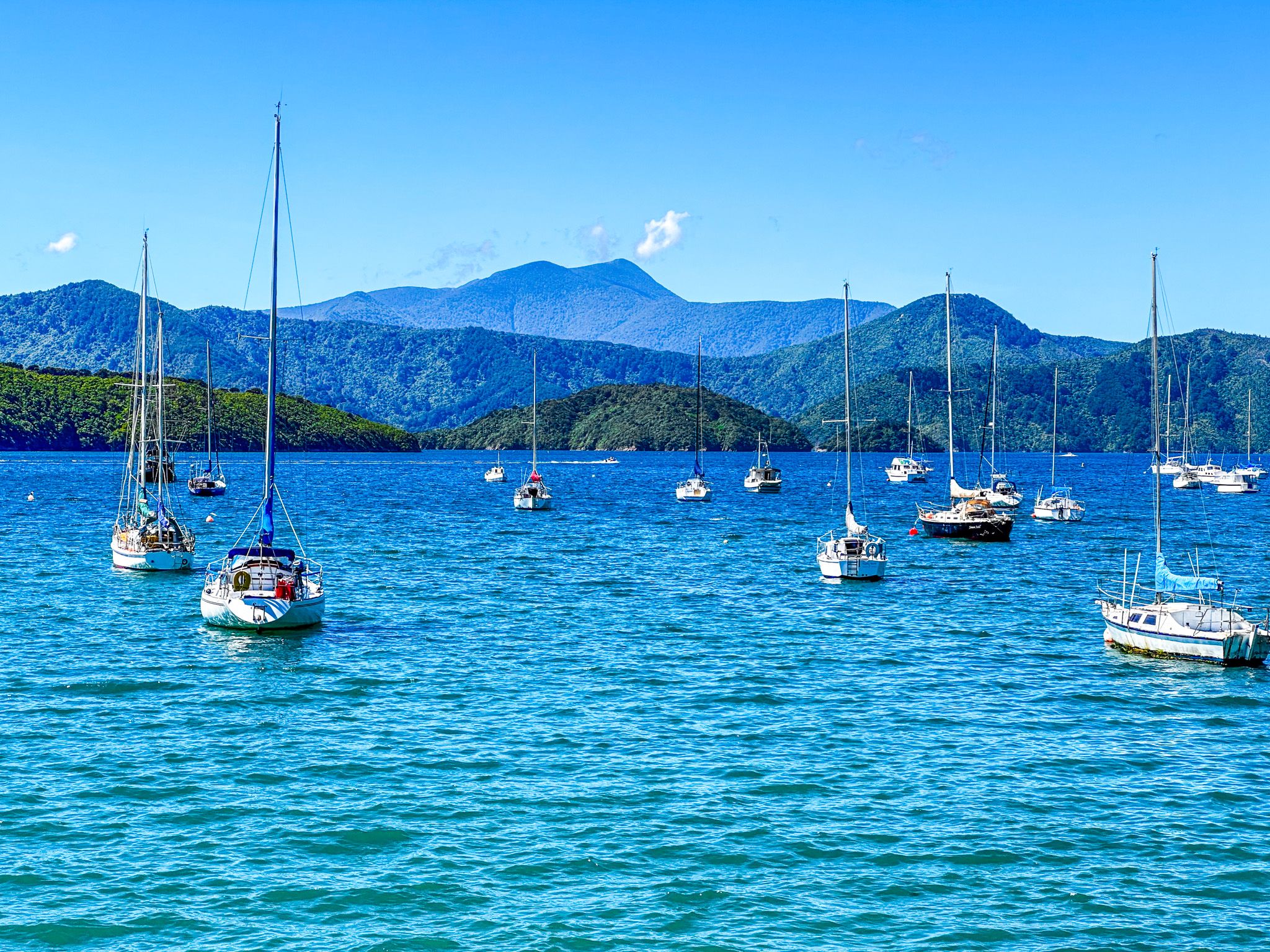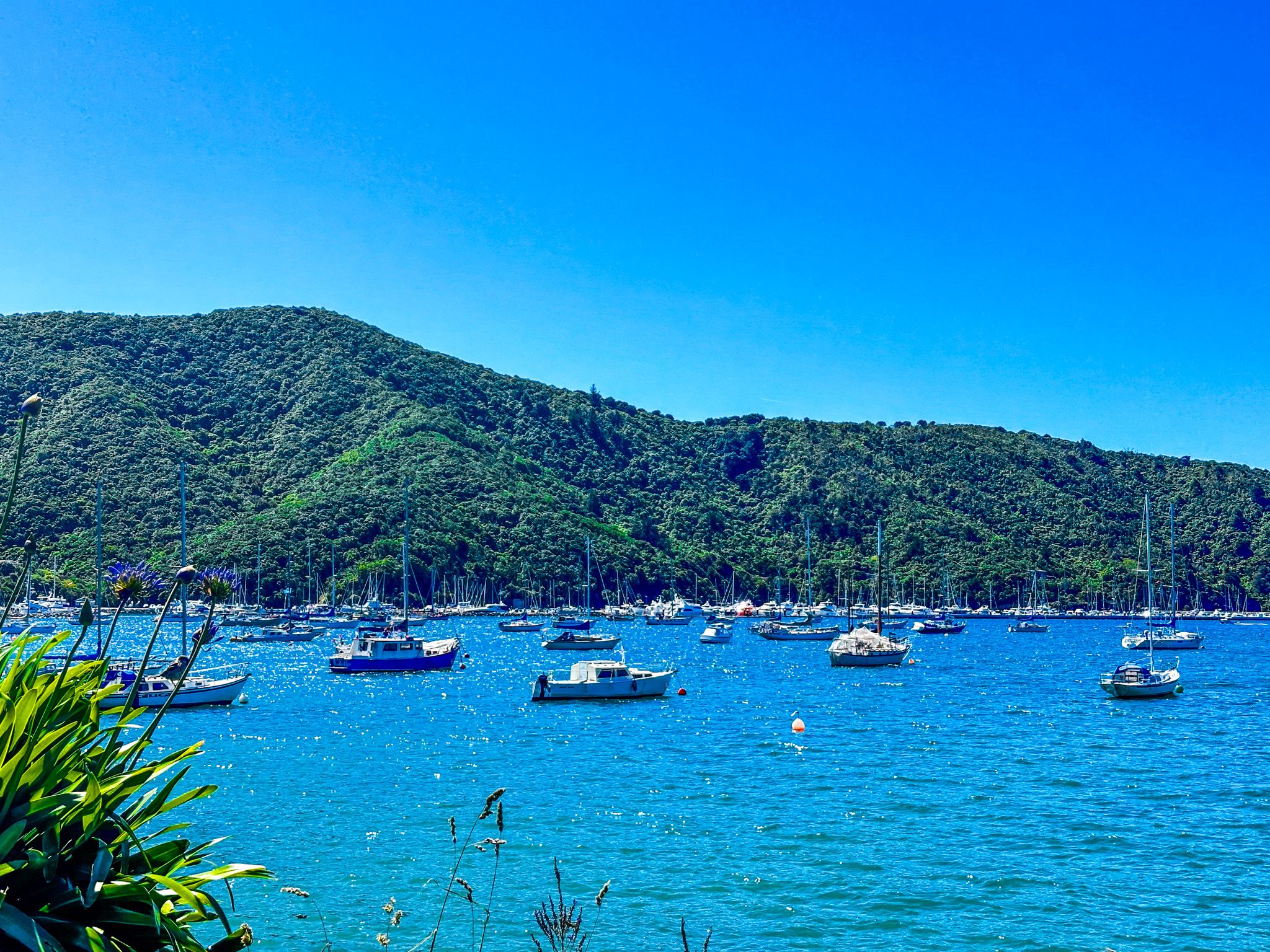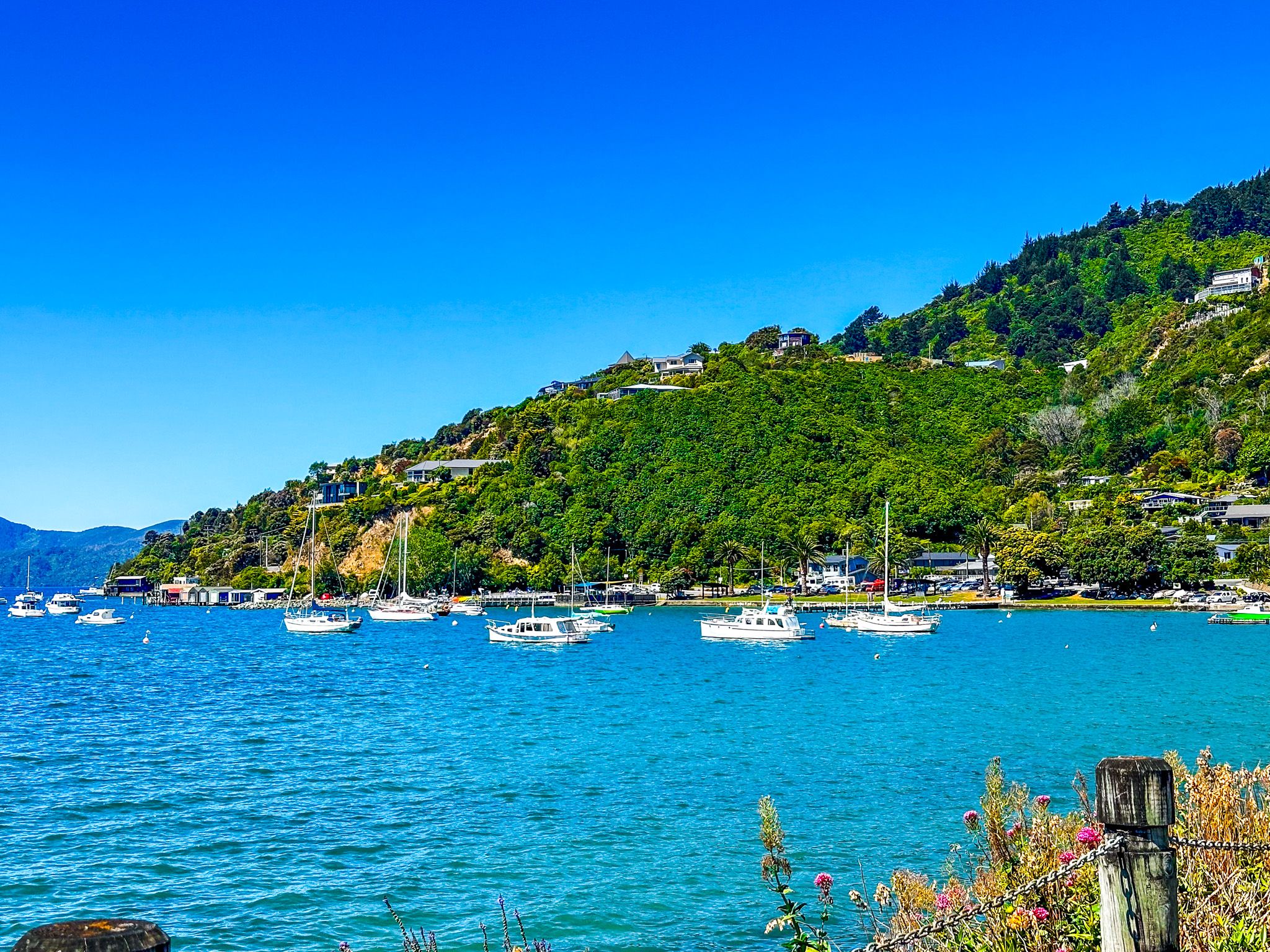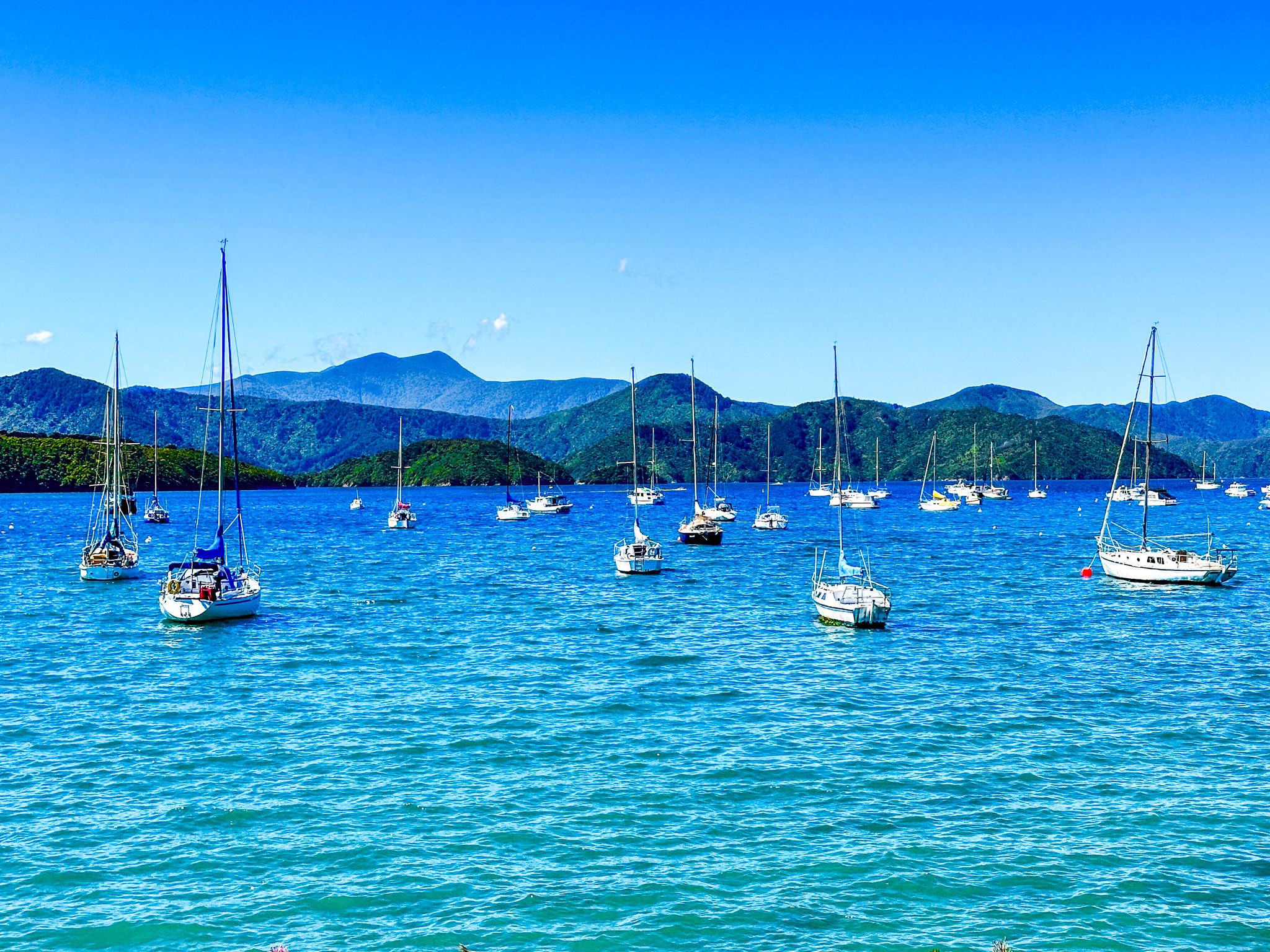The town of Waikawa in Waikawa Bay is immediately northeast of Picton along Waikawa Road, which then becomes Port Underwood Road. The bay is relatively narrow and connected to Queen Charlotte Sound / Tōtaranui. It is bounded to the northwest by the Snout, a long point that separates the bay from Picton Harbour. On the northwest side of the bay and below the Snout is one of the largest marinas in NZ, with 600 berths.
The Snout is a forested reserve with many walking tracks. There is also an easy coastal walk and access to several small beaches on the southeast side of the bay.
The bay had a long pre-European Māori history. At least eight iwi have historic associations with the area, with plantations in the valley and kaimoana in the bay. Local iwi were disrupted by the invasion by Te Rauparaha and their defeat at Te Rea o Karaka pā around 1829/30. However, after the purchase of land around Picton and Waikawa by the NZ Company in 1850, the victorious iwi, Te Ātiawa o Te Waka-a-Māui, which had occupied a local pā, moved into private houses in the new town of Wiakawa as part of the land sale deal.
These people were disrupted by a typhoid outbreak around 1860, resolved when Ropoama Te One, the local rangatira, discovered a clean water source. A memorial to this event was placed on Waikawa Road in 1978 by the Picton Historical Society, based entirely on iwi oral histories of the outbreak that predated published news services in Picton.
